Artist based in Chicago, IL

Noah Greene-Lowe, Portrait of the artist
Tell us about yourself, what's your background?
I think of myself mostly as a sculptor, although I also make 2-dimensional work. I grew up in Atlanta, GA, and until recently I was living in St. Louis for graduate school. My mom was (and is) an artist and a naturalist who was always interested in art-science collaboration. She taught me how to draw and paint and sew. She also advised me not to be an artist because of how difficult a life it would be, but I think that also prepared me to work very hard at it when I decided to do it anyway.
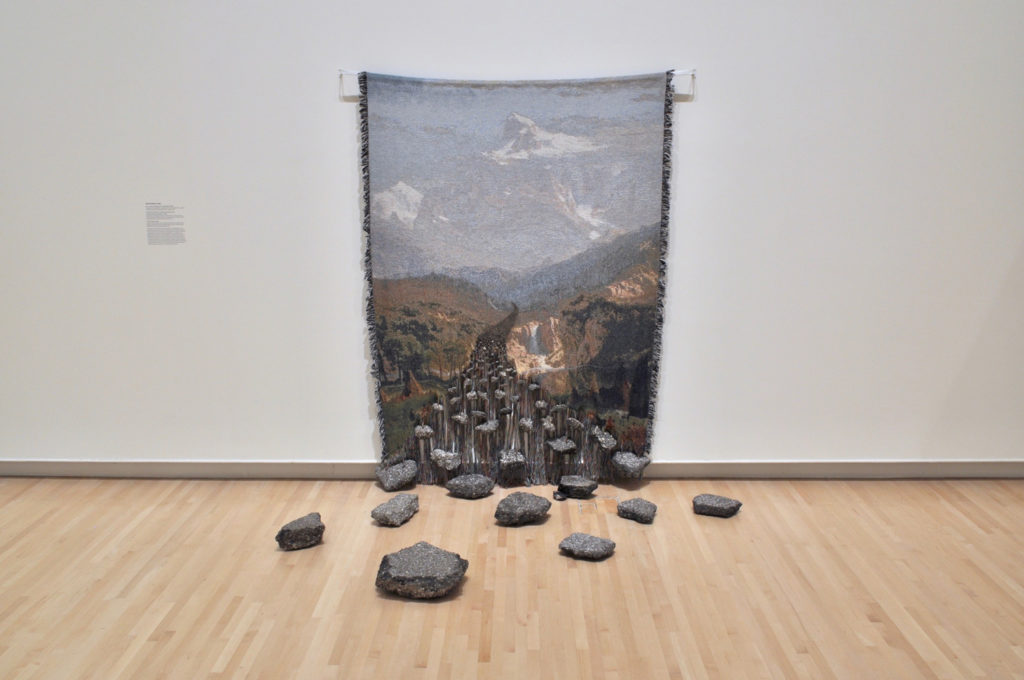
St. Louis Landscape (Facing West) 2022 curtain rod, found asphalt, jacquard woven blanket with a section of Albert Bierstadt’s Rocky Mountains, Lander’s Peak dimensions variable, approximately 70 x 72 x 36”
My grandfather was a luthier—a maker of guitars and violins—and I spent a lot of time in his basement workshop as a kid. He made me toys and instruments, and showed me how it was possible to transform something into something else. After he died in the fall of 2020, I made some of my own work in that same workshop—untitled (log) was made from his leftover materials.
I didn't really know I was going to be an artist until I was in college. I had been an architecture student, but I found that I was a lot more interested in responding to deeper questions with my work, rather than design prompts that often felt arbitrary. Nonetheless, I still think about architecture very often in my work, in the way that material reflects lives and social relations.
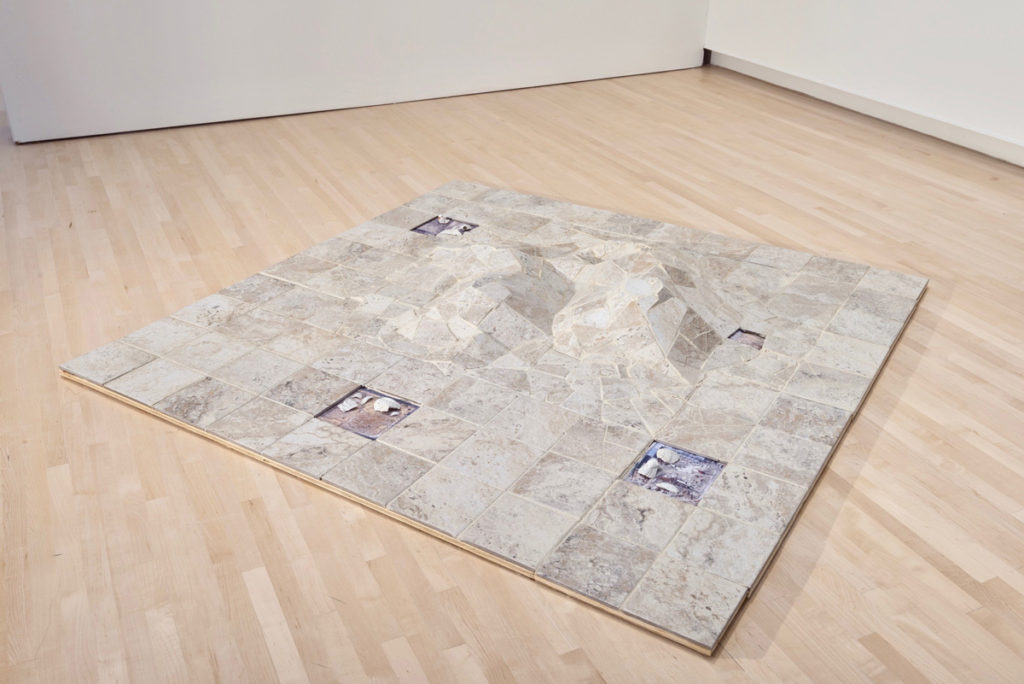
I’ll Fly Away 2022 ceramic floor tile, grout, wood, ceramic figurines, inkjet-printed satellite images from sites of displacement: Kinloch and Mill Creek Valley, MO, and Little Manila, Stockton, CA 12 x 60 x 60”
"I am currently working on is expanding my work Tapestry...It's a kind of hanging chain-link weaving made from jewelry...I became interested in the chain-link fence as itself a kind of weaving. I was struck by the relationship between such a forceful symbol of separation and the delicate, often social act of weaving."

In the studio
What are you currently working on and where did the inspiration for it come from?
One of too-many things I am currently working on is expanding my work Tapestry, which I began in 2021. It's a kind of hanging chain-link weaving made from jewelry I've collected from secondhand stores over the last couple of years. It began when I became interested in the chain-link fence as itself a kind of weaving. I was struck by the relationship between such a forceful symbol of separation and the delicate, often social act of weaving. At that time, I was also researching the political geography of St. Louis, and thinking about the ways that communities are defined by who they exclude. So it became about both exclusion and interconnection.
When I first showed it, the work was only about six feet long, but I want to see it much bigger, and really cutting through a space like a fence does.
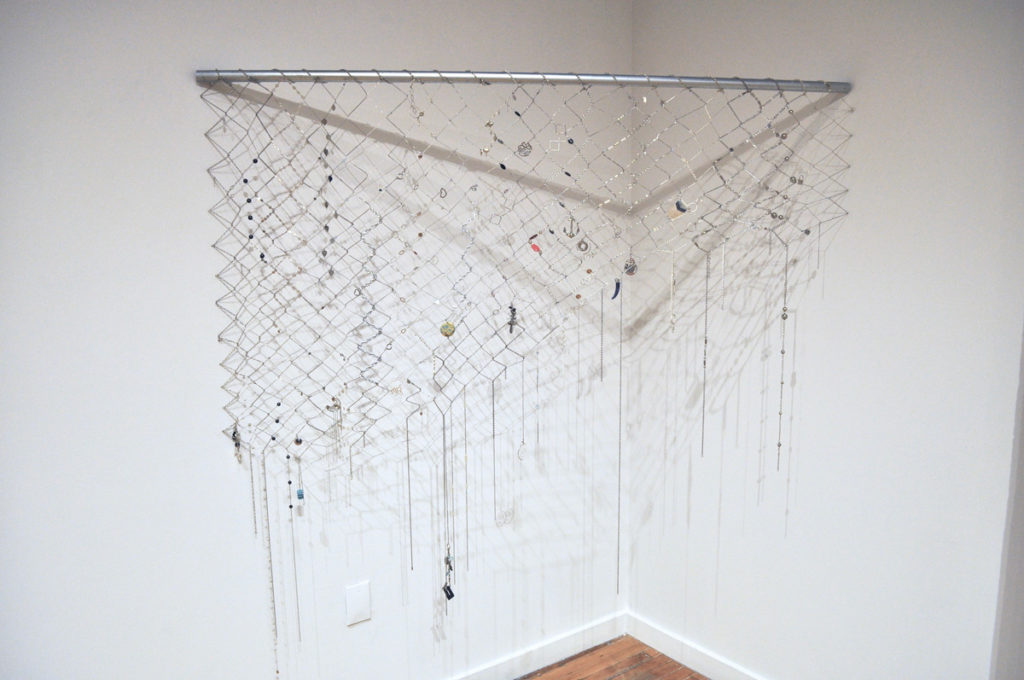

Tapestry (ongoing) 2021- Secondhand jewelry, fencepost, wire Dimensions variable, approx. 72 x 72” at time of image
Innovation does not only happen in the field of technology — it occurs everyday in a creative practice. What do you do for inspiration?
I look at other artists' work, of course, but recently I have often found myself looking to writing or film. Sometimes the way a feeling or an idea translates between language and images and life makes me want to express something similar in material, in an artwork. That can often be better motivation for my own work than looking at something that is already a sculpture or a painting. Also, I get a lot of inspiration from my material itself, from the things that I find or collect.
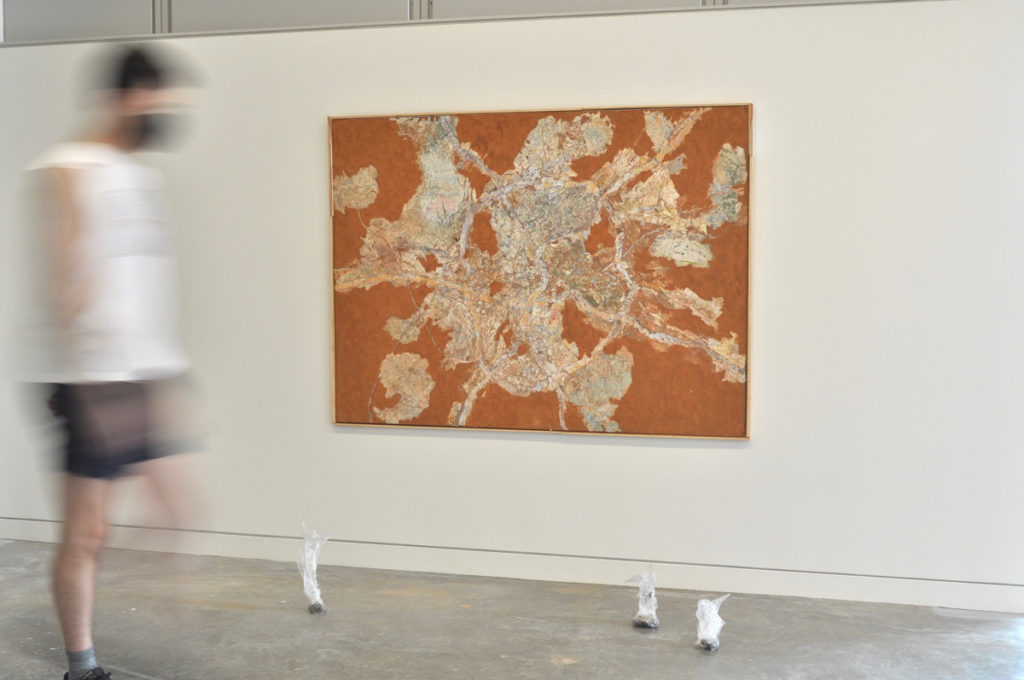
Describe your practice and process. Where do ideas start for you? In the studio or being in the world?
I think it really depends on the work. Collecting materials is a big part of my practice, and things I find in thrift stores or on the street are often starting points for work. Then I bring it back to the studio and have to figure out how to actually work with it— how close I can get to the thing that I see in my head.
But I also have a compulsion to reuse things, and I often make work out of the materials left over in my studio from something else.
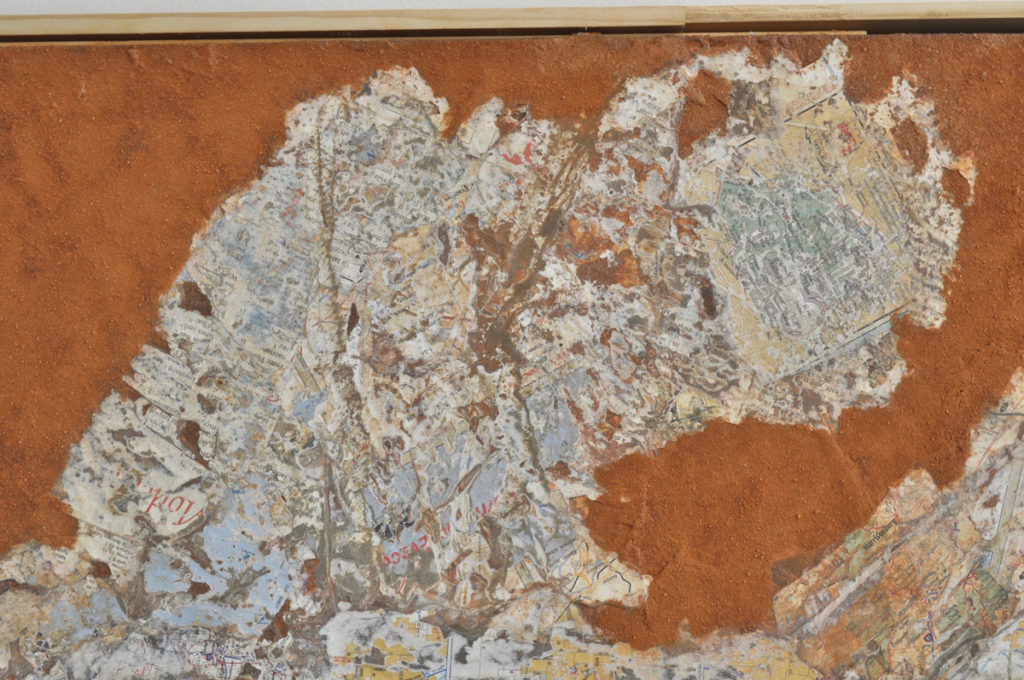
Highway Drawing (Heart of the New South) 2021 Powdered red soil, glue, and paper maps on masonite, found wood frame 48 x 65 x 1”
Other than that, ideas sometimes start with research. Some works come from reading scholars' ideas and wanting to make them feel real or visceral—to kind of prove that they resonate in everyday life.

untitled (log) 2020 Found wood, guitar rosette 36 x 7 x 8”
How do you make your work, does it start with a sketch?
I sometimes sketch, but only to get an initial idea or an image down on paper. Most of the process after that is a kind of slow wrestling with the material. I try not to rely too much on the initial sketch or idea, because I want to leave room to respond to the materials, to see what they naturally want to do and to work with that. If I have a style, it probably comes from the kinds of things I collect. I often try to find the most ordinary or unremarkable things to work with, so that what I make them do feels more extraordinary. In that sense, it can be like a magical realism, or fabulism. I think I'm drawn to things that have a kind of mundane nostalgia to them—things that most seem to call for disruption.
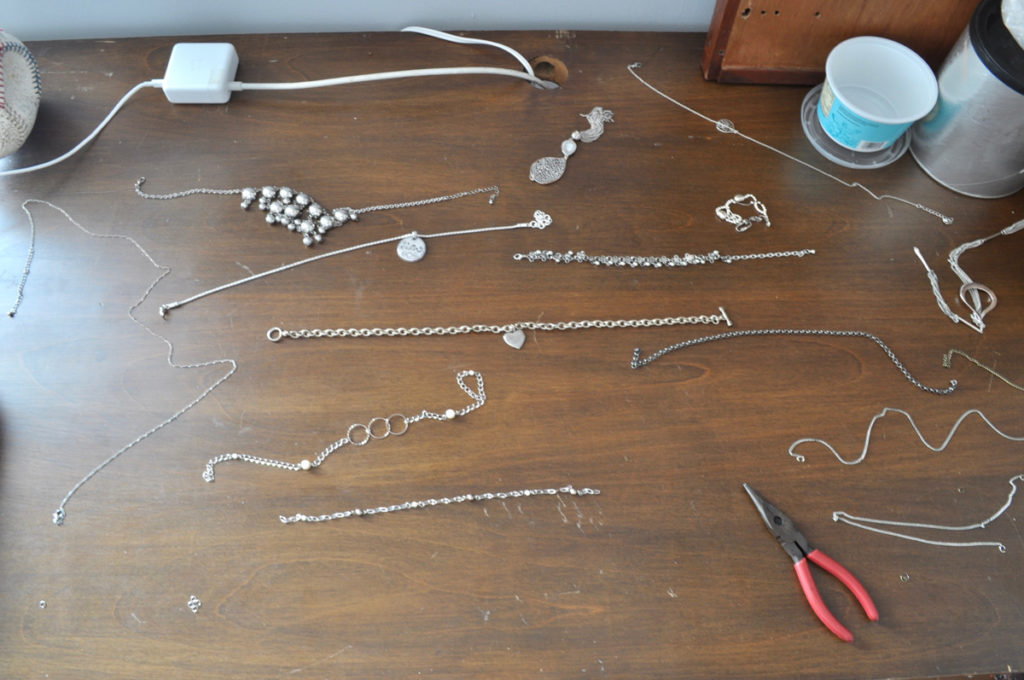
Prep work for "Tapestry"
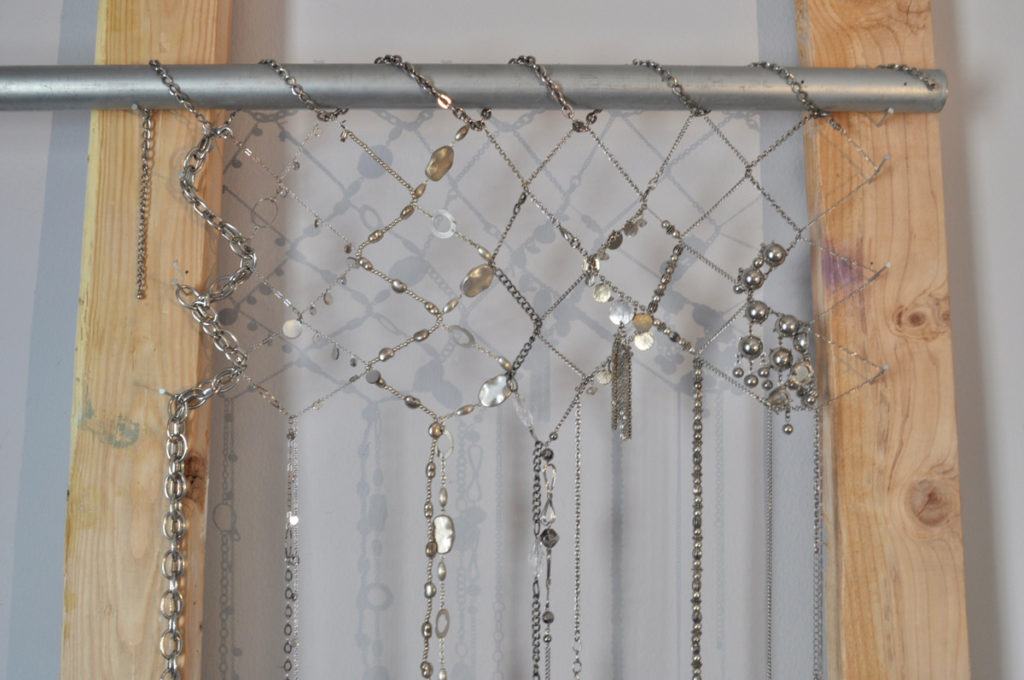
Section of "Tapestry" in progress
Do you have your own studio ritual? What does that look like for you?
In the studio, I most often listen to house music or jazz, but it really depends what I'm doing. If I'm doing something really repetitive, I'll listen to an audiobook. Recently I'm listening to Zadie Smith and Jia Tolentino. And I always like to have coffee or tea when I work.

Picture frame experiments

Works in progress made from baseball skins and embroidery thread
Who are your biggest influences?
The first time I felt I could truly be serious about art as an occupation was when I learned about Mark Bradford's work. It showed me something new about how concept can translate into material, and I still draw on it heavily in my 2-dimensional pieces.
My sculpture has been strongly influenced by Doris Salcedo and the South Korean artist Yeesookyung, among a lot of others. In undergrad, I got to work with the artist Sonya Clark, and her thinking has had a big impact on my work.
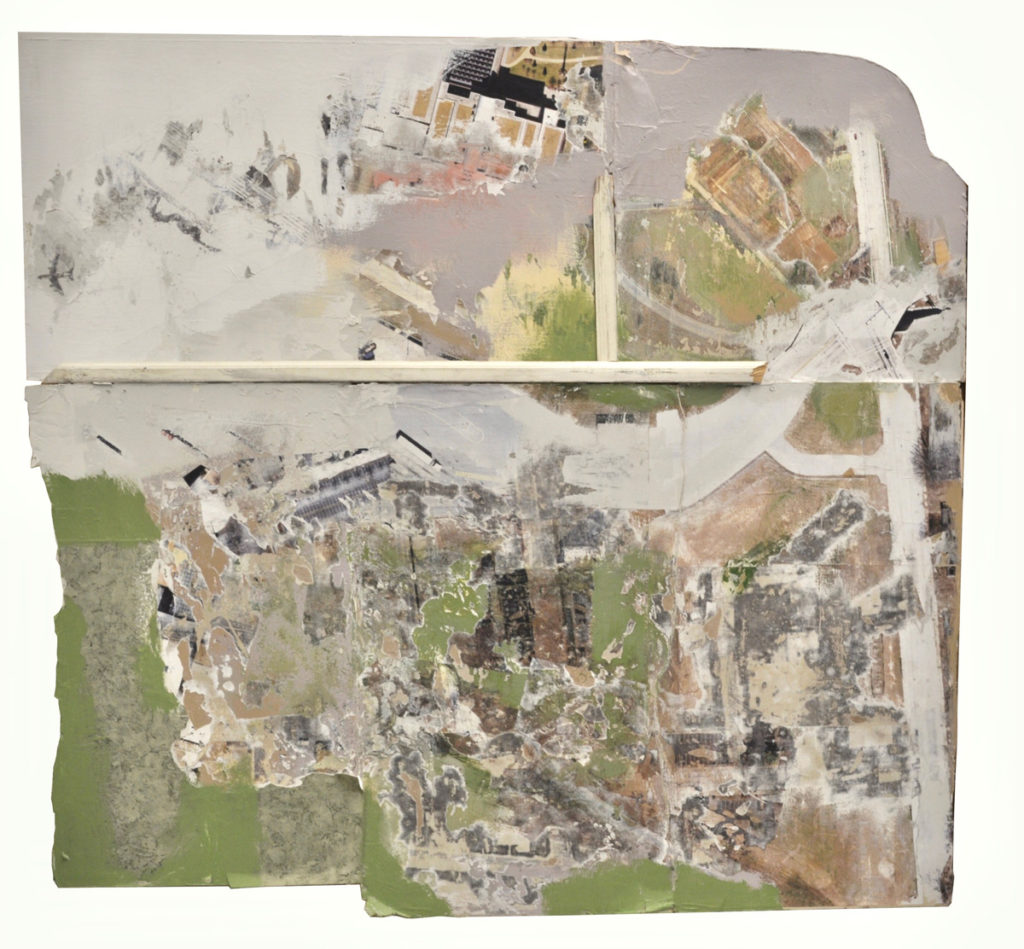
Runway (in progress) 2021- drywall, inket printed satellite images, interior enamel, wallpaper, found wood approx. 60 x 60"
Are there books or films that are an important source of inspiration?
I really like Andrei Tarkovsky's films, and I think his visual language finds its way into my sculpture. I was really struck by Ocean Vuong's writing in On Earth We're Briefly Gorgeous—his way of describing things and playing with language was something I wanted to put into my work.
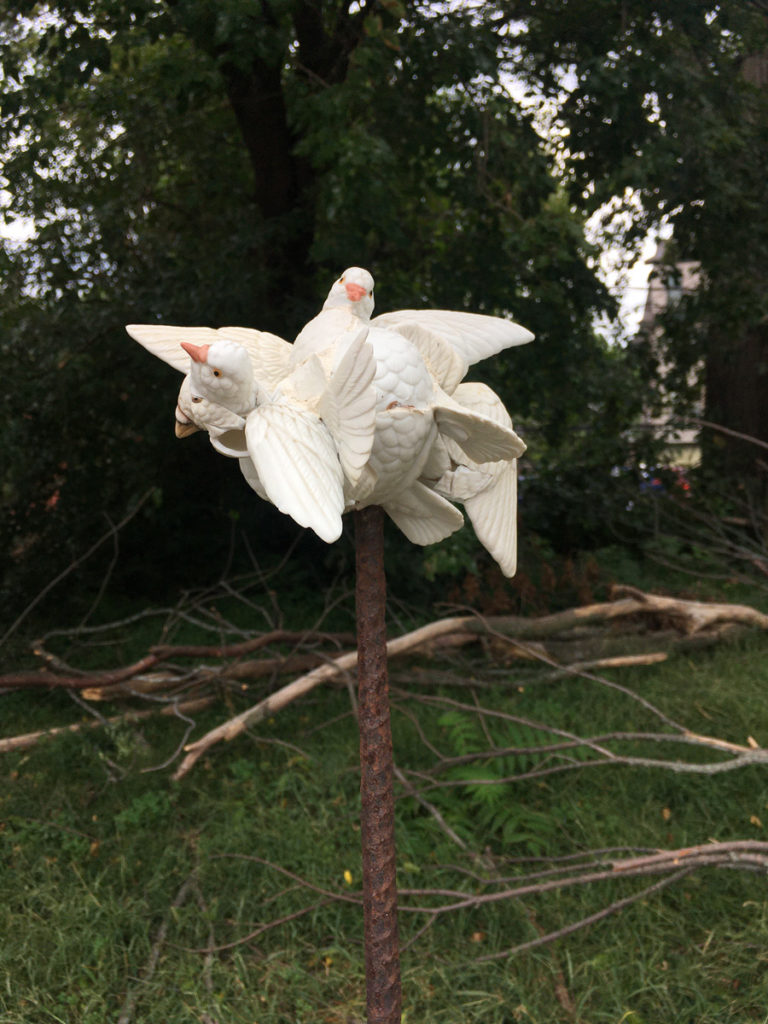
An experiment with ceramic birds, photographed outdoors
On the more academic side, I've taken a lot from Stuart Hall on the process of identity formation, and from Sara Ahmed's "A Phenomenology of Whiteness."
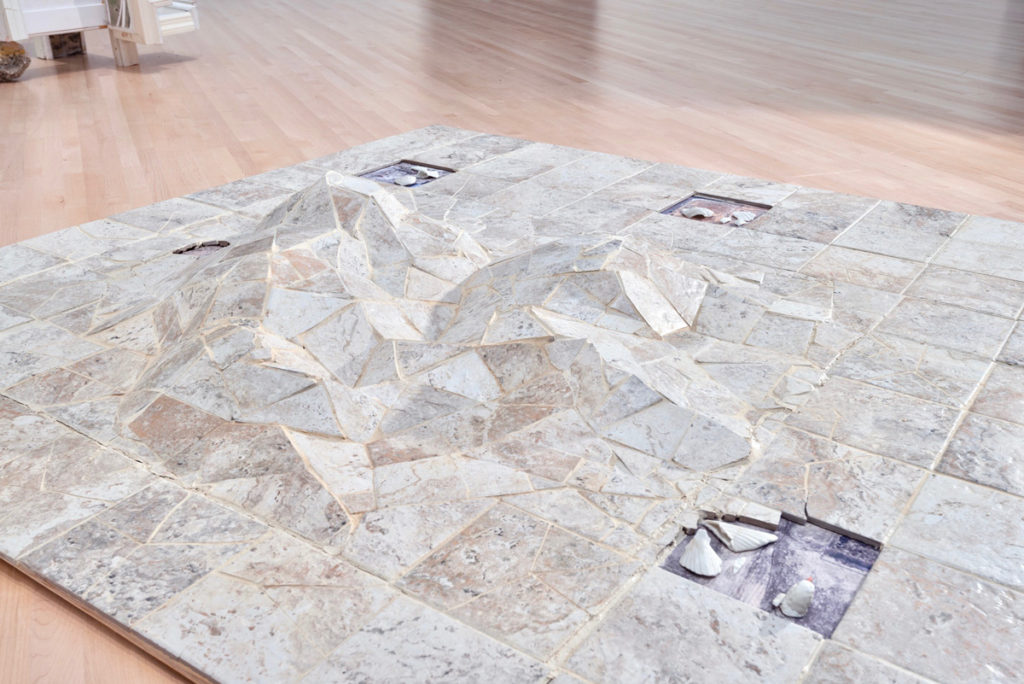
I’ll Fly Away 2022 ceramic floor tile, grout, wood, ceramic figurines, inkjet-printed satellite images from sites of displacement: Kinloch and Mill Creek Valley, MO, and Little Manila, Stockton, CA 12 x 60 x 60”
What’s the best piece of advice you’ve been given?
It's not exactly advice, but a useful exercise we did when I was a student of Sonya Clark's was to come up with a series of impossible artworks with the material we'd been working with. I've found that to be a useful way to approach a material and start thinking about it in new ways, and in some cases it's not so impossible and it turns into a real work.
What is the best advice you would give to other artists?
It's probably the same advice that I always try to give myself, which is to experiment with the material as much as you can, and pay attention to what it does, instead of only what you want it to do. In other words, collaborate with it as much as possible—don't overdetermine the work before it starts. A professor I was working with, Arny Nadler, recently told his class you should "pledge allegiance to the thing in front of you," and I think that's a good way of putting it. It's advice I'm trying to take more.

Stay up to date with Noah Greene-Lowe
Instagram @ngreenelowe
noahgreenelowe.com